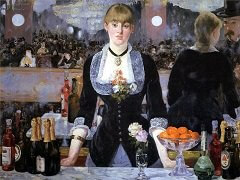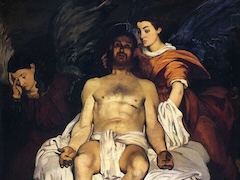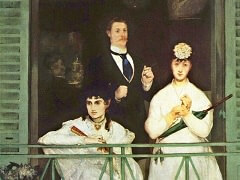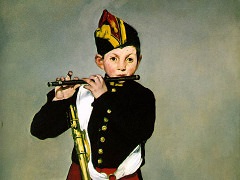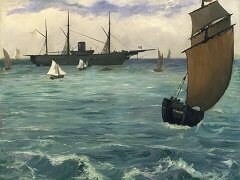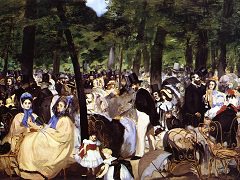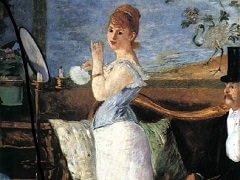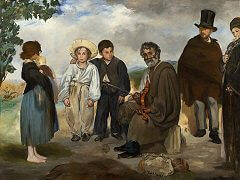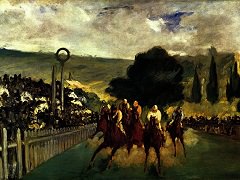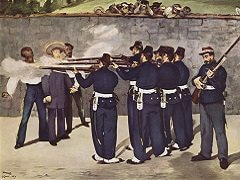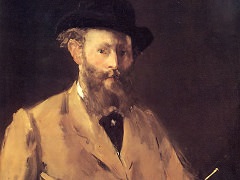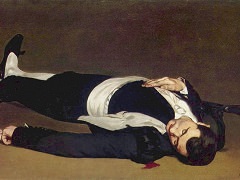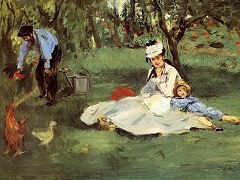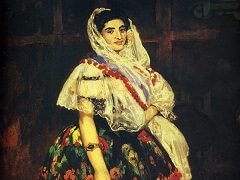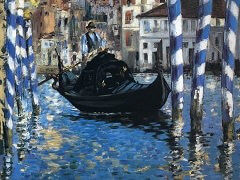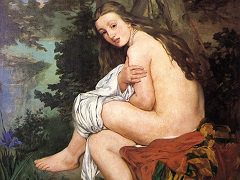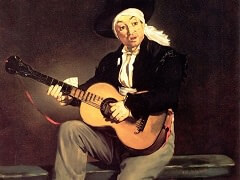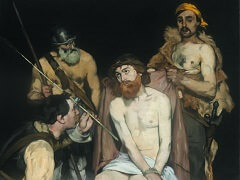Luncheon in the Studio, 1868 by Édouard Manet
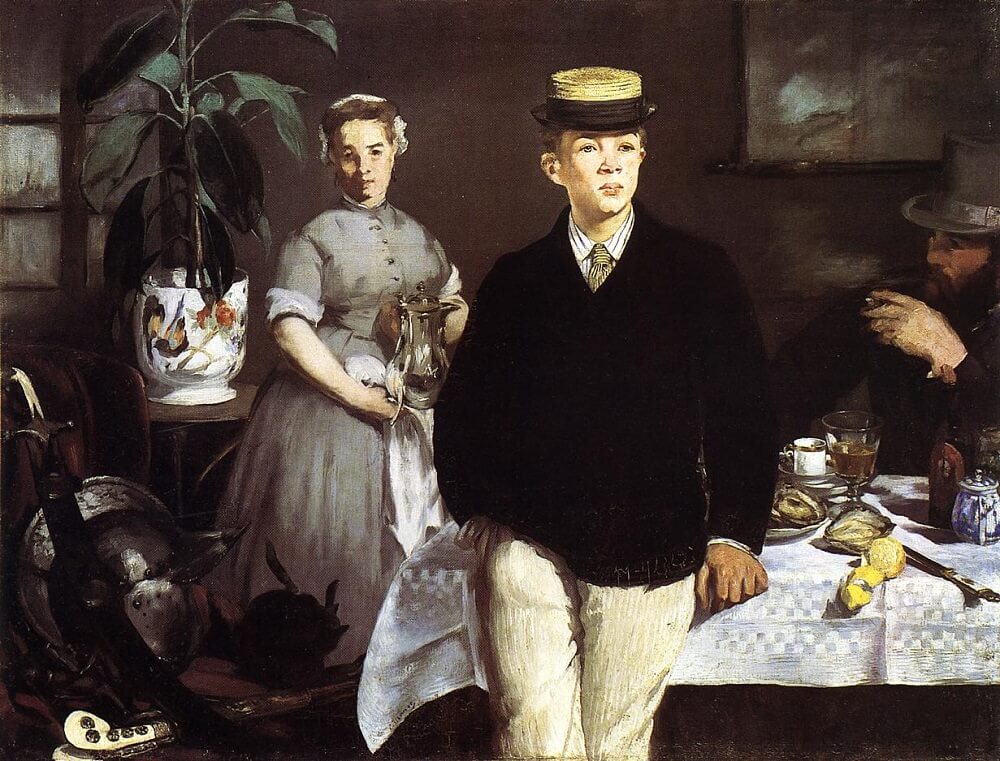
Luncheon in the Studio was submitted by Manet for exhibition at the 1869 Salon, a work which exemplifies Manet's artistic treatment of his subjects and models. The first impression is nothing more than that of a loose association of figures around a table in a cool arrangement of space. A slightly blase-looking, casually dressed young man, Leon Koella-Lecnhoff, is leaning against the front of the table. He was allegedly the younger brother of Manet's wife, Suzanne Leenhoff, hut was in fact her son, probably from a relationship with Manet prior to their marriage.
A fellow-painter, Auguste Rousselin, cropped by the right margin of the painting - a daring technique borrowed from Japanese prints-is sitting at the carefully laid table, on which there is an arrangement of objects reminiscent of a Dutch still life. The relationship between the figures and objects, however, remains enigmatic: the woman in the background who is staring out of the picture at the viewer and is painted in blurred, soft strokes, is not connected in any way to the figures at the table. The masterly painting of the vase contributes as little to the genre "breakfast painting" as the oysters and the peeled lemon on the table, the collection of weapons in the left corner, or the obtrusively painted ceramic pot with its rubber plant projecting into the picture.
Henri Matisse saw Lunch in the Studio at Bernheim's in 1910, and was so struck by it that thirty-six years later he could bring details of the work to mind: "The Orientals used black as a colour, particularly the Japanese in their prints. Closer to us, there is a certain painting by Manet, I remember the black velvet jacket of the young man with the straw hat is in downright black and light".

